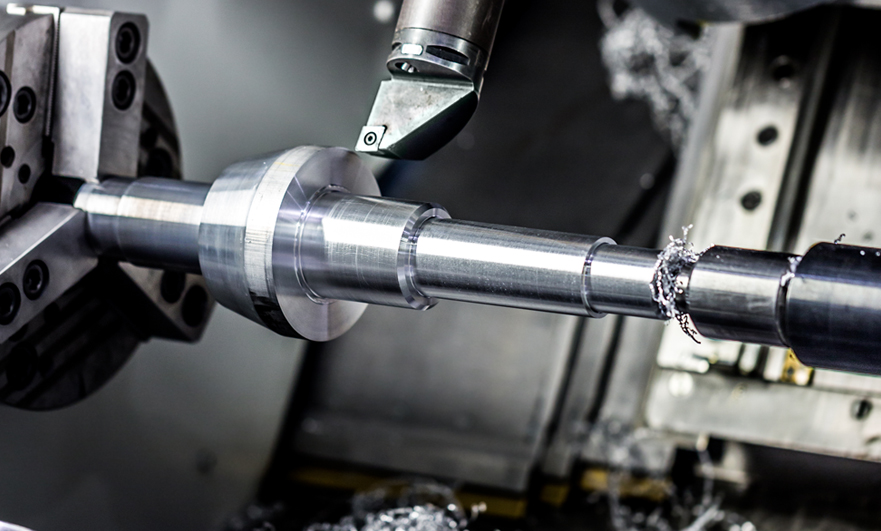15 years one-stop China custom CNC machining parts factory

Hey there I’m VMT Sam!
With 25 years of CNC machining experience we are committed to helping clients overcome 10000 complex part-processing challenges all to contribute to a better life through intelligent manufacturing. Contact us now
 183 |
Published by VMT at Dec 09 2021
183 |
Published by VMT at Dec 09 2021
Cemented carbide is an alloy material made of hard compounds of refractory metals and bonding metals through powder metallurgy. The alloy composed of one or more of the carbides and the bond metal drill is often called cemented carbide. Precision CNC machining parts factories are inseparable from cemented carbide.
The hardness of cemented carbide is extremely high, and conventional CNC machining techniques such as CNC turning, CNC milling, and CNC drilling cannot be used. Cemented carbide must be processed by diamond tool grinding or electric discharge machining (EDM). Our company has advanced mechanical technology, which is especially suitable for CNC machining of cemented carbide.
What is carbide precision CNC machining parts technology?
Cutting is one of the commonly used cutting methods for tungsten carbide rods, cemented carbide plates and cemented carbide materials. For materials of 1mm or less, diamond ultra-thin cutting parts are usually used for CNC machining.
In the diamond resin-based cutting piece, the outer ring belt is a resin bond abrasive working layer, and the center part is a high-strength metal, which is mainly used for medium and large cutting grooves and cutting.

In the carbide CNC machining process, the tool itself must be higher than the hardness of the machined part. At present, the tool materials for turning hard alloy parts are mainly made of high-hardness, high-strength non-metallic binder CBN and diamond PCD.
1. External cylindrical CNC grinding
We have a high-precision CNC cylindrical grinder for grinding cemented carbide with a length of 1500 mm and a diameter of 450 mm.
2. Internal cylindrical CNC grinding
CNC grinding machine, used for grinding special carbides and cutting tools with diameters and profiles.
3. Surface grinding
We have several rotary surface grinders. The grinding wheel is installed on a vertical spindle and rotates in parallel with the magnetic table. In this way, a completely flat curved surface parallel to the back of the precision CNC machined part is obtained. We can grind parts up to 1500 mm in diameter.
We also have several horizontal spindle surface grinders.
4. EDM
Since cemented carbide cannot be processed by milling or drilling, EDM is an ideal process for carbide processing. In the EDM process, an electric spark is generated between the electrode and the workpiece embedded in the medium. This very carefully controlled electric spark generates intense heat and melts precise local areas on the surface of precision CNC machined parts. The medium acts as a coolant, washing away the corroded metal particles.
However, in order to avoid cracks in precision CNC machined parts caused by the internal stress of carbides, a lot of experience is required. In order to prevent corrosion during EDM, special carbide grades must be used. We can advise you to make the right design and material selection.
Points for Attention in Heat Treatment of Cemented Carbide Precision CNC Machining Parts
In order to improve the cutting performance of tungsten carbide precision CNC machining parts and eliminate the internal stress of the workpiece, a certain heat treatment program should be set during the machining process.
1. Preliminary heat treatment
The purpose of pre-heat treatment is to improve the cutting performance of the material and eliminate the residual stress in the blank manufacturing process. Commonly used methods include annealing and normalizing.
2. Eliminate residual stress
Since the internal stress generated during the CNC machining of the blank will cause deformation of precision CNC machining parts and affect the quality of CNC machining, heat treatment must be carried out to eliminate residual stress. The best arrangement for heat treatment to eliminate residual stress is after rough machining and before finishing. For parts that do not require precision CNC machining, annealing is usually carried out before the blank enters the workshop to eliminate residual stress. For precision screws, precision spindles and other high-precision cemented carbide parts, multiple heat treatments should be carried out to eliminate residual stress, and even cold treatments should be used to stabilize the size.
3. The final completion
The final purpose of CNC machining is to improve the strength, surface hardness and wear resistance of tungsten carbide precision CNC machining parts, usually before grinding. Commonly used are quenching, carburizing, nitriding and carbonitriding.
Therefore, in the cemented carbide precision CNC machining parts, in order to improve the mechanical properties of the precision CNC machining parts, heat treatment is essential to make the CNC machining quality meet the product requirements.
Ready To Start Your Next Project?
Get Instant Quote

Request a Free Quote
Send us a message if you have any questions or request a quote. We will get back to you ASAP!